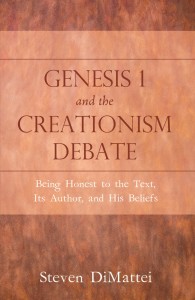A recent post over on Robert Price’s blog, author of The Christ Myth Theory and Its Problems, critiquing Bart Ehrman’s recent book, Did Jesus Exist? The Historical Argument for Jesus of Nazareth, in which he defends the historical existence of Jesus, got me thinking about the topic.
Currently unfamiliar with both of these books, I nonetheless offer up these points for consideration. At first glance, here is the evidence as it stands stacked up against those who would claim that Jesus is but a myth, that no historical Jesus ever existed.
1) There are frankly speaking no mythic elements in the Jesus story/stories preserved in the gospels. There are no talking serpents, no anthropomorphic deities, no allusions to agricultural myths, no presentation of a primordial or pre-historical time-frame, no description of a decent and ascent from the underworld, no personified rivers, trees, magical palm leaves, etc. The only element that might be inferred as mythic is the virgin birth story, but even there the claim is dubious (see #4).
2) The very notion or idea of a mythic Christ is a perspective that derives from later Christian practices. In the 3rd and 4th centuries under the influence of Greco-Roman religions, Christ was assimilated with various mythologies and mystery cults. There are either texts or visual artworks from this period that depict many of these assimilations: Christ as Orpheus, Christ as Adonis, Christ as Osiris, etc. Another example of this later mythicization can be seen in Gnostic literature as well, where there is often repeated talk of ascents through the 7 realms of heaven, and mythological personifications of abstract ideas, and mythological rewritings of the Fall myth that places Christ as the talking serpent, etc. What modern Mythists have actually done is retrojected a phenomenon of later Christianity onto its origins, claiming that Jesus Christ was a mythic invention. To say the least this is poor methodology. Today, the paradigm among biblical scholars is to understand the early Jesus movement from within its 1st century Palestinian Judaic context, even if, granted, this morphed into other religious varieties in later periods.
3) This 1st century Palestinian Judaic context amply explains much of what we see in the early literature. Thus even though Paul’s gospel and theology may be described as antithetical to mainstream 1st c. Judaism it nevertheless can be fully explained from within this very context, AND from the fact that Paul had adopted his “Jewish” message to fit the needs of his non-Jewish Greek addressees. The gospels too can also be understood from the socio-historical contexts that gave birth to their unique compositions, and which often grappled with the same question that Judaism itself faced in the aftermath of the destruction of its primary religious symbol and center, the temple, in 70 AD—namely, ‘what direction should Judaism now take?’
4) All of the supernatural, miraculous, and hyperbolic elements certainly present in the gospel narratives can sufficiently be explained by taking a broader look at what ancient Greco-Roman literature was all about, especially when authors wrote “histories” and “biographies” about people who were deemed exceptional by the communities that wrote about them. Look at Plutarch’s biography of Alexander the Great, born from Aphrodite, or Suetonius’ biography of the emperor Vespasian who performed miracles of healing in the Roman forum, one of which has the healing of a withered hand. Or look at the hyperbolic biography of Apollonius of Tyre who also raised a man from the dead, cured blindness, etc. And there are many more similar stories. It is in this literary context that the gospel narratives must be understood.
The Mythists must overcome these data. And contrary to what Price may claim, the burden of proof lies on the Mythists.
Granted I also think, as many of my colleagues do, that there is overwhelming data to conclude that the portraits of Christ in the gospels are not in fact reliable historical records of Jesus the Galilean Jew. But that is an entirely different claim than to say there was no Jesus at all. And with this comment, I might add a #5 to our list, a more speculative question.
5) If Jesus Christ of the gospels was a literary invention (which he was even from my admission above; so let’s say a literary creation ex nihilo from the Mythists’ perspective) then for what reason? So that a heretical sect of Aramaic Jews and later non-Jewish Greeks could be persecuted by its mainstream father-religion? Or burnt alive by Roman emperors? So that this community of people, many of whom were poor and outcasts, could hand over their very last possessions, be labeled as criminals by the political hegemony, and opt out of living economically in the world to sit and wait for the messiah?
I don’t see a single strength in the Mythists’ position, and instead numerous obstacles that they must overcome or ignore in order to support their fantasies.





